
Just how strong are abolokov threads and re-bored ice screws? Read on and find out!
Early last winter a new study analysing ice climbing anchor strength appeared on the internet. This practical field study was carried out by J.Marc Beverly and Stephen W. Attaway and was titled "Ice Climbing Anchor Strength: An In-depth Analysis".
In it the authors set out to test several hypotheses about ice anchors - namely that re-bored ice screws were strong enough to hold a UIAA fall and that Abalakov threads were stronger than an ice screw. All these tests were done over the winter of 2007 – 2008 and followed up an earlier study they had done on 'stubby' (circa 13cm length) screws in 2005 – 2006 (Dynamic Shock Load Evaluation of Ice Screws: A Real World Look).
What are re-bored ice screws?
'Re-bored ice screws' describes the technique placed an ice screw into a pre-existing screw hole. This technique has been around for a few years, I've even used it myself on numerous occasions on ice routes, although it is viewed with suspicion by many ice climbers.

There are two main situations where I've used this myself, the most common in my experience is when climbing steep ice - 85°+ - where placement opportunities might be limited due to the lack of 'good' ice (due to the way vertical ice formations form the ice can frequently be poor). On reaching the first patch of good ice I've found that several leaders before have all done the same thing and placed their screws there. As placing another screw runs the risk of weakening the surrounding ice I've used a pre-existing hole and placed my screw in that.
Obviously this throws up several questions about what type of screw was used before, what the weather and temperature have done to the hole in the intervening period etc. Typically I've worked on the idea that if the screw 'bites' whilst being placed and I can feel a constant resistance when placing it, then I convince myself that it's a good placement! Another possible situation is using a pre-existing hole to very quickly place a screw thus saving time and strength and hopefully allowing the pitch to be completed without taking a fall.
Until now the question – "How strong are these placements?" has not been answered by actual test data. More often than not such placements are viewed by climbers as primarily 'psychological' protection and at best provide some emotional reassurance i.e. you can look down and see some gear rather than the rope looping away into oblivion. Whilst other climbers point blank refuse to believe that such placements have any value whatsoever.
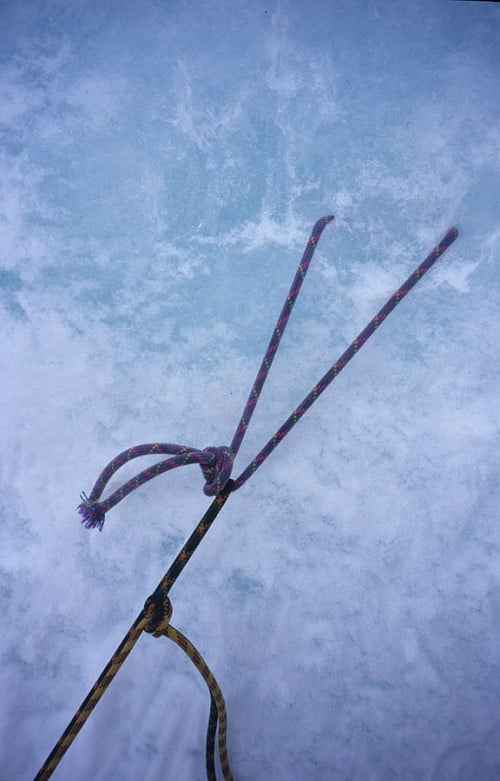
The Abalakov Thread or V Thread has over the years become the standard abseil anchor for descending from ice climbs. I first came across it in Allen Fyffe and Iain Peters book, 'The Handbook of Climbing' around 1990 and used the technique the following winter whilst ice fall climbing in France. However it predates this period significantly. I asked Allen about it, and he reckoned he first heard of the technique in the early eighties, although who from and when is shrouded in the mists of time. He does recall Andy Nisbet, one of Scotland's most prolific winter first ascentionists', describing the technique as an Abalakov sandwich at around that time.
One of Canada's most well known ice climbers, Joe Josephson, has written a short history and description of the ice thread in his ice-climbing guide "Waterfall Ice". Josephson says that the distinguished Russian climber, Vitaly Abalakov, invented the technique although no date for the techniques invention is actually given. Whilst out in Colorado climbing in the winter of 2001, I met several leading American climbers who told me that the 'Abalakov' thread was actually developed by Jeff Lowe. In an email I received from Jeff Lowe he says -"-In fact I don't know who invented the V thread, but my brother Greg showed me how to do it with an unthreaded Snarg back in about '77, and I wrote about the technique in a Lowe Alpine tech manual in the late'70's. Greg devised the technique as an extension of trying to punch holes behind columns of ice that were solid at the back, in order to thread runners. He arrived at the idea of a V thread from that. The smooth Snargs were incredibly fast - just bang one in at the right angle, wiggle the eye back and forth a bit to lubricate the shaft so it could be popped out with a tug, then repeat to form the other arm of the V...... Perhaps Abalokov arrived at the technique earlier or latter, I don't know.."
Whoever came up with the idea it's damn neat, and has certainly made abseiling from ice routes potentially safer, and less expensive! Over the years several studies into the strength of Abalakov Threads have been carried out. These studies provided information that Abalakov Threads were strong, in some cases very strong. This has led to the idea that Abalakovs were in fact stronger than an ice screw placement and were therefore strong enough to belay from on multi-pitch climbs. However Petzl did some tests that suggested Abalakov anchors made in streambed ice were weaker than single screw placements placed in same, although the failure strength was still strong enough for it to be considered for use as an abseil anchor or climbing anchor.
The Tests
As stated at the beginning of this article "Ice Climbing Anchor Strength: An In-depth Analysis" by J.Marc Beverly and Stephen W. Attaway1 set out to test several working hypotheses. These were:
- Re-bored ice screws are strong* enough to arrest a UIAA** fall
- The over driven ice screw in a shorter original hole is strong enough* to take a leader fall on.
- Shorter ice screws placed in longer screw holes are as strong as longer ice screws placed in longer screw holes.
- Abalkovs are stronger than ice screws.
- Abalkov strength is directly related to the area it encompasses rather than orientation.
* The authors stated a figure of 7 – 8Kn as being strong enough. This figure came about based on earlier testing carried out by the same authors in a study titled "Dynamic Shock Load Evaluation of Ice Screws: A Real-World Look".
** The International Mountaineering and Climbing Federation (UIAA) uses a test load of 80Kg for a single rope and 55Kg for a half rope s a test mass. The reasoning behind the lower test mass on the half rope is that a half rope should ideally see only 70% of an 80Kg mass in a dynamic fall factor of 1.74. The way the UIAA do the test represents the worst case scenario in climbing as there is no dynamic belay element involved in this test. The peak force during the first drop on the test mass should not exceed 8Kn in the case of the half rope and 12Kn for a single rope.
One of the challenges facing the authors regarding re-bored ice screws was as they state that "Fortunately, there are few case reports for failed re-bored ice screws resulting in injury. The lack of published literature available limits our ability to perform a retrospective study." So although there are few recorded cases of re-bored ice screws failing, climbers tend to assume that if a piece of gear or type of anchor works for one occasion then by extension they believe it will work the next time (I guess the converse also holds true). As the authors add - "Fortune smiles on climbers most of the time, but it is impossible to know how strong is "strong enough" without formal testing where failure is observed".
In the case of whether ice screws are stronger than Abalakov/V Thread anchors they took the Petzl informal testing (as mentioned earlier) that "proposed that Abalakov anchors are weaker than single screw placements in streambed ice".
To explore their hypotheses they did two types of tests. The first one was a static pull test (where the anchor is subjected to a slow and steady increase in load) which was done on ice screws placed in lake ice. When describing these tests the authors state that the grain size of lake ice and water ice are very similar (grain size has a direct effect on how fractures develop in ice: the larger the grain size the greater the propagation of fracture) so how the screws behaved on lake ice would be similar to how they would behave on ice on a climb. The use of lake ice for part of their testing highlights one of the issues with testing any type of ice anchor – namely that to have consistent results and allow direct comparison tests you need a control medium with as small a variability as you can find. Lake ice although not perfect does have the advantage of being easy to reproduce. It also had the advantage of being easy to access and allow them to make direct comparisons with the earlier Petzl tests.
It is also worth noting that at very slow loading rates ice tends to be ductile i.e. the extent it deforms plastically and without fracture. This means that the screw placements were expected to be stronger as the load rate was slower. If the load rate is faster then the strength of the ice screw placements was expected to decrease with the rate of loading – more akin to real life when an anchor is subjected to a shock load due to say a climber falling.
The authors quote that slow pull tests failures will be about 20% higher that the drop tests i.e. the anchors when loaded in a slow pull test were expected to be 20% stronger than when loaded in a drop test. They also expected differences to exist during testing due to lake ice having fewer defects than waterfall ice i.e. the tests down on waterfall ice might have more variation due to minor defects in the ice. Their drop testing was carried out at Ouray Ice Park, Colorado on two actual ice climbs both with slightly different aspects i.e. height and direction.
To test the ice screw placements the authors performed drop tests on both re-bored and over driven (or over drilled) placements i.e. where a longer screw is placed into a shorter existing hole. They then tested what they described as the worst case scenario where the climber would place a short screw into a longer pre-existing hole. It was also noted by the authors that they used screws that had already been used either in drop testing or in the slow pull test. This meant that some screws broke before the ice placement failed with the main cause of mechanical failure being the eye of the screw fracturing (one screw fractured at the mid point of the tube). If an ice screw had obvious signs of fatigue it was not used again. They noted that new screws that had not been tested previously did not suffer mechanical failure.
During testing a variety of makes and length of ice screws were used. Although the authors don't mention what makes were actually tested they do thank Grivel, Petzl and Black Diamond at the end of their study so I assumed that these were the main makes of ice screw tested. All the screws were placed at a positive angle with the authors aiming for 0° to 20° as a target range for testing re-bored ice screws.
When testing the Abalakov/V threads the authors experimented with several different orientations. These were horizontal (classic method used to construct a thread and shown in Image 5) with the angles being 60°x60°x60° (legs perpendicular to the ice); horizontal 60°x60°x60° with the 'legs' placed at a positive 20° angle; vertical with one 'leg' at 90° the other at 60°; and vertical 60°x60°x60° (shown in Image 6). They used 7mm Perlon cord as well as 1" tubular webbing to thread the Abalakovs.
The Results
So what were the findings of this report? All in all the authors carried out 15 drop tests and 38 slow pulls on re-bored ice screws. Their findings about re-bored ice screws were surprising if you are in the camp that holds that such placements are very dubious, or less so if you have always been convinced about their security.
Re-bored Ice Screws
What they found was that when the re-bored ice screw placements were drop tested the mean (average) failure was around 10.6Kn whilst slow pulled re-bored screws failed at a mean of 11.1Kn. They compared these findings with their earlier study done on short (around 13cm long ice screws from Grivel and Petzl) in 2005-062. In their earlier testing in 2005-06 they found that drop testing these short screws placed at a positive angle gave a mean failure of 10.14Kn.
On interesting point they noted when testing re-bored screws was they achieved a very high failure strength (22.5Kn) for one re-bored ice screw that had been left overnight with a test mass of 80Kg hanging from it for more than 10 hours with recorded temperatures of -30°C1. Handy to know if you find yourself caught out on a hanging belay from re-bored screws overnight in very cold temperatures!
As mentioned all the re-bored screws were placed at positive angles and during testing they found that placing the screw at 8° to 16° seemed to give the optimal angle for greater strength (failure strengths 9Kn +) whilst re-boring the ice screw at 0° or as great as 25° showed a marked decrease in strength (failure strengths of around 7Kn to 8Kn). As noted earlier the authors stated that the average strength of an ice screw placement in 'good' ice is around 7-8Kn and the UIAA fall test on ropes generates a peak force during the first drop of less than or equal to 8Kn for a half rope.
Note: The UIAA safety standard for ice screws only tests the mechanical integrity of the actual screw i.e. the hanger and tube components – not the strength of it's placement in ice (ice screws have to be able to withstand a load of 10Kn for the EN standard and 9Kn for the UIAA standard.
When testing different lengths of ice screw re-bored into different lengths of hole they found that when slow pulling the placements on lake ice there was a strong correlation between length and strength with longer screws generally performing better i.e. stronger. This idea of longer screws being stronger placements did not seem to be borne out when they were drop tested however. The authors note they did do a limited number of drop tests which might account for there not being enough data to produce a reliable mean.
Results of Tests on Ice Threads
It is in regard to their tests on Abalakov Threads that the most interesting results were observed. As mentioned the authors experimented with two main orientations in how the Abalakovs were set – horizontal and vertical. All the Abalakov/V Threads were slow pull tested on lake ice. Overall they carried out 18 tests on horizontal Abalakovs and 10 tests on vertical Abalakovs (or A Threads as they refer to them in their report1). All the threads were constructed using a Grivel 360 22cm screw and were done using angles of 60°x60°x60° with the thread 'legs' being around 18cm x 18cm x 18cm (exception being the threads done vertically with one 'leg' at 90° the other at 60°). For some tests they angled the legs of a horizontal Abalakov at a 20° positive angle (as described for placing an ice screw).
Some of the anchors were threaded with 7mm Perlon and others with 1" webbing. These test results illustrated that the anchor strength of the Abalakov was strongly affected by how wide apart the 'legs' of the anchor were and how they were oriented e.g. vertical vs horizontal. This meant that the more total area enveloped by the Abalakov, the greater the anchor's strength. They also found that a vertical or Anderson thread increased the overall strength. Typically this gave a comparison mean strength of 11.3Kn for Abalakov Threads (horizontal) and 14.4Kn for the vertical or Anderson threads. Although there is a strong difference between the two types of thread the good news is that both types were strong enough to hold a climber abbing off a single thread anchor. It should be borne in mind that several (3 tests) had threads fail at below 7.5Kn (7.5Kn being the load of an 'average' climber fall)1. It was also noted that the horizontal thread that had the legs angled at a 20° positive angle was weaker than the equivalent horizontal thread.
Comparing re-bored ice screws with threaded anchors
The authors compared their earlier testing done on 'stubby' (circa 13cm length screws) ice screws placed on virgin ice in 2005 – 20062 with their recent tests of re-bored ice screws (both drop test and slow pull test). When the did this comparison what they found was that the distribution curve of the data for each tests were broadly similar with most failures occurring within the 10 – 15Kn range. When they compared the re-bored ice screws with both horizontal and vertical V threads their testing showed that longer ice screws re-bored were stronger than Abalakovs, whilst vertical Abalakovs (Anderson threads) were stronger than horizontal Abalakovs. On average horizontal Abalakovs were about the same as re-bored short screws. Now this is where the 'however' bit comes in...
What should be borne in mind, as the authors point out, is that they did a very limited number of tests on longer screws (I worked out from the test data to estimate this as about 6 tests). This means that the spread of data is very limited, possibly to limited to draw any firm conclusions from. They also pointed out that there was a considerable spread in all anchor strengths, with the potential for anchor failure at loads lower than the expected 7.5Kn loads generated by an average ice climbing fall.
All Threads are not equal?
What does appear to be interesting is the comparison with the horizontal Abalakovs with vertical Abalkovs and the vertical threads being very much stronger. The key finding was "test results indicate that the more total area enveloped by the Abalakov, the higher the ice anchor's strength".
60°x60°x60° horizontal Abalakov were found to be weaker than the equivalent 60°x60°x60° vertical Abalakov (Anderson).
60°x60°x60°horizontal Abalakovs with the legs placed at 20 degrees positive were found to be weaker than equivalent 60°x60°x60° horizontal Abalakov.
All the above is assuming 'good ice' – however it should be borne in mind that the mean load for thread failures regardless of construction method was above what you would expect a climber abseiling to place on the anchor. What is interesting is that the vertical (Anderson) thread when threaded with 1" webbing failed at loads around 12.5Kn to 20Kn whilst when threaded with 7mm Perlon failed at loads of 10Kn to 15Kn.
The weakest configuration tested was a thread constructed in a vertical orientation with one leg drilled at 90° and the other leg drilled upwards at60° to intersect it. These had a mean failure load of around 9Kn to 10Kn.
Overall Anderson Threads (vertical Abalakovs) when threaded with 1" tubular webbing failed at loads from 12.5Kn to 20Kn compared with horizontal Abalakovs which failed at loads from 7.5Kn to 17.5Kn. Note: all placed in 'good ice'.
Study Conclusions
So what conclusions can be drawn from this study. As stated earlier the authors set out to test several working hypotheses. These were:
- Re-bored ice screws are strong* enough to arrest a UIAA** fall
- The over driven ice screw in a shorter original hole is strong enough* to take a leader fall on.
- Shorter ice screws placed in longer screw holes are as strong as longer ice screws placed in longer screw holes.
- Abalkovs are stronger than ice screws.
- Abalkov strength is directly related to the area it encompasses rather than orientation.
So did their hypotheses hold true? We'll look at each point in order.
Looking at the above Hypotheses and taking it in order. As their test results were variable with some re-bored screws failing at loads lower than the UIAA fall factor then they stated that re-bored ice screws are to weak to hold a UIAA fall factor ALL of the time. However the authors did demonstrate that they can be stronger than expected and at their best are comparable with a 'stubby' ice screw placed in virgin ice. They did find that longer ice screws re-bored into shorter holes were generally strong enough to hold the average force generated in a leader fall (7 – 8Kn), likewise with shorter screws into longer holes. Also they found that any refreezing process that decreases the diameter of the hole over time is of benefit to the strength of the re-bored screw.
A key component in determining the strength of an Abalakov (assuming placed in good ice) is the greater the area the Abalakov envelops the more likely it is to be a stronger anchor. The authors recommend saving the longest screw to make an Abalakov using a 60°x60°x60° configuration and placing it in a vertical configuration known as an Anderson Thread.
Longer screws, whether re-bored or freshly placed in 'good' ice are stronger anchors (assuming also placed at the optimum positive angle placement of >8° and <16°). This positive angle range appears to hold true for all screw placements in 'good' ice.
As to whether Abalakovs are stronger than ice screws their tests would suggest that a long ice screw placed in 'good' ice is stronger than a horizontal Abalakov made in 'good' ice – compare a spread of failure load for long screws of 10Kn to 20Kn and an Abalakov (horizontal V Thread) failure spread of 7.5Kn to 17.5Kn.

Given that if a screw (the longer the better) is placed in a pre-existing hole angled at a positive angle of >8° and <16° in good ice you can create an anchor strong enough to hold a fall generating (7 – 8Kn), then the question is how do we make the most of a re-bored ice placement in real life? First off - ensure that the ice is 'good' ice (always a potentially subjective issue relying heavily on the climber's experience and judgement). I would suggest that when placing a screw into a pre-existing hole check the surrounding area. Any other holes, air pockets etc close to the pre-existing hole could potentially compromise the placement (allowing the ice to fracture more easily). Whilst placing the screw into the pre-existing hole if you feel a constant resistance as the threads bite then that would suggest the threads are firmly biting into the ice. Also ensure that the hole is at a 'positive' angle.
Anderson Threads (Vertical V Threads) are stronger than horizontal Abalakovs using a 60°x60°x60° configuration and made with a long ice screw (22cm). Additionally it was observed that the greater surface area enveloped by the V Thread the stronger it is with the ideal configuration being 60°x60°x60°. I found that trying to do construct an Anderson Thread is more awkward than doing a horizontal Abalakov mainly due to difficulty in visualising the angles in the vertical plane, but maybe practice will make perfect. Alternatively given in testing both configurations were strong enough to hold an abseiling climber you could stick with doing your V threads horizontally if you are challenged by doing them vertically. Whatever method you use it is worth noting that they did get some failures at very low loads so I would suggest you still be in the habit of backing up your V thread (whatever configuration you use) for the first person down.
All this aside, ice is still a very variable and fickle medium. As the authors state near the end of their study:
"Learning good skills at where and when to place ice screws remains an art, although our science is helping us compose a better picture of ice anchor behaviour experienced in real-world conditions"
Acknowledgements
Many, many thanks to Marc Beverly for his very prompt and considered response to my email questions clarifying key aspects of his study. If there are any errors, omissions ect in my article they are entirely down to my poor interpretation of his own very well presented and put together studies. Thanks also to both Allen Fyffe and John Armstrong for helping me clarify some conclusions and thoughts about this study.
References
The following studies and documents were referenced in researching this article:
1. "Ice Climbing Anchor Strength: An In-Depth Analysis" by J. Marc Beverly, Stephen W. Attaway 2009
2. "Dynamic Shock Load Evaluation of Ice Screws: A Real – World Look" by J. Marc Beverly, Stephen W. Attaway 2005
3. "Measurement of Dynamic Rope System Stiffness in a Sequential Failure for Lead Climbing Falls" by J. Marc Beverly, Stephen W. Attaway 2006
5. UIAA 101 Dynamic Mountaineering Ropes
6. "Myths, Cautions and techniques of Ice Screw Placement: a summary of two years of research." By Chris Harmston. Published by Black Diamond.
7. "The Cold Truth – How strong is ice protection?" Craig Luebben Published in the Climbing Magazine Dec 15th 1996.
8. "Protecting our Futures on Ice" by Murray Toft. The Gazette, Winter 1996.
9. Black Diamond Ice Screw Instructions
10. "How to Ice Climb!" by Craig Luebben ISBN 1–56044–760-5
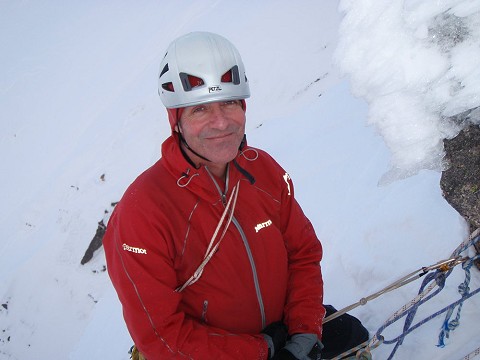
George McEwan is based in Aviemore, Scotland and is a Senior Instructor at Glenmore Lodge (the National Outdoor Training Centre) and is the Technical Officer for the Association of Mountaineering Instructors (AMI).
George has been climbing and mountaineering for over twenty years. In that time he has put up numerous first ascents both in the UK, Europe and Nepal.
He has climbed mostly in the French Alps around Mount Blanc, both summer and winter. Also climbed in New Zealand Alps. Expedition to Langtang Valley, Nepal 1st ascent of the North Ridge North face Naya Kanga 1989. Second British Expedition to Tien Shan for attempt on South Face of Khan Tengri 1993. 1999 trip to Alaska to attempt Nettle - Quirk route on Mt Huntington, then West Ridge of Mt Hunter.
In the past few years his climbing has focussed primarily on waterfall ice climbing, with this passion taking him to Canada, Colorado, France, Italy, Austria and Switzerland.
His professional career has spanned seventeen years during which he has worked for Outward Bound, and for the past thirteen years with Scotland's premier National Outdoor Training Centre - Glenmore Lodge where he currently works as a Senior Instructor.
Although actively involved in all forms of climbing from bouldering through to ice climbing, George's primary passion is steep water ice.
- IMPROVE: Steep Ice Climbing Technique 5 Jan, 2016
- Essential Winter Skills: Ice Axe Self Arrest 5 Mar, 2015
- Protecting Winter Belays - Safety Tips 16 Jan, 2012
- Ice Climbing - Physical and Mental Advice 19 Dec, 2011
- DESTINATION GUIDE: Colorado Ice 28 Feb, 2009
- Glenmore Lodge: 60 Years Involvement in Climbing and Mountaineer 9 Oct, 2008


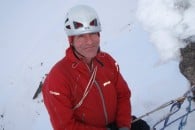

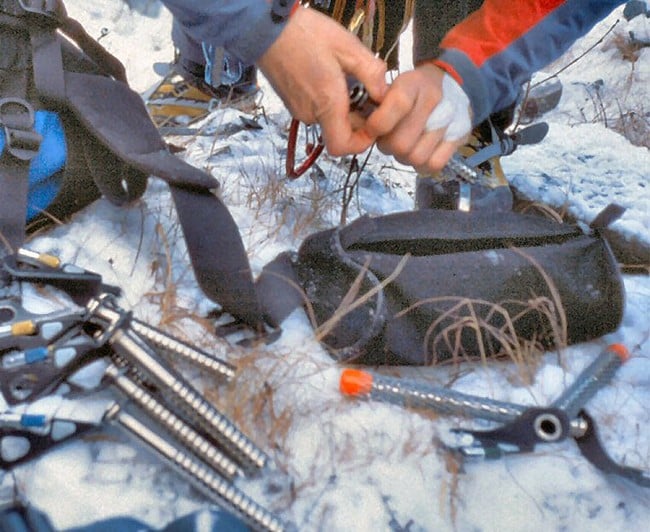
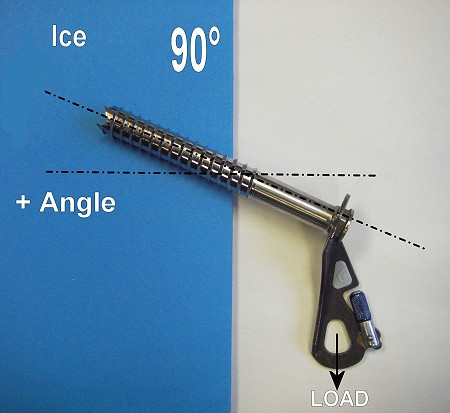
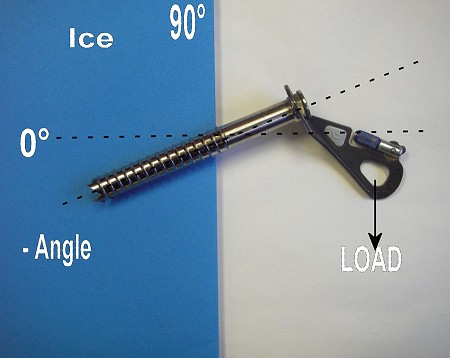
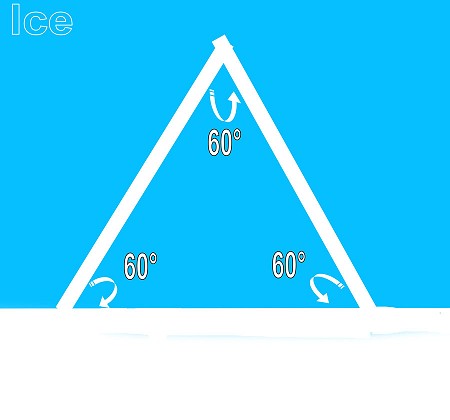
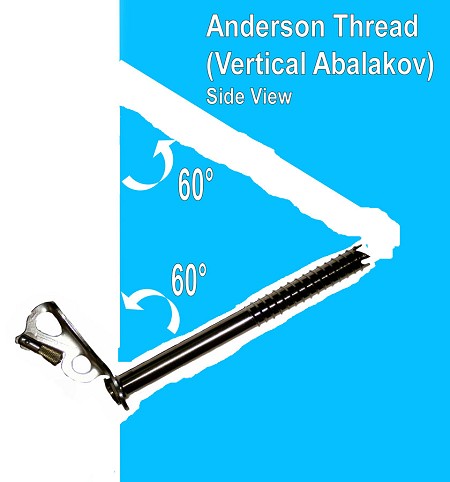

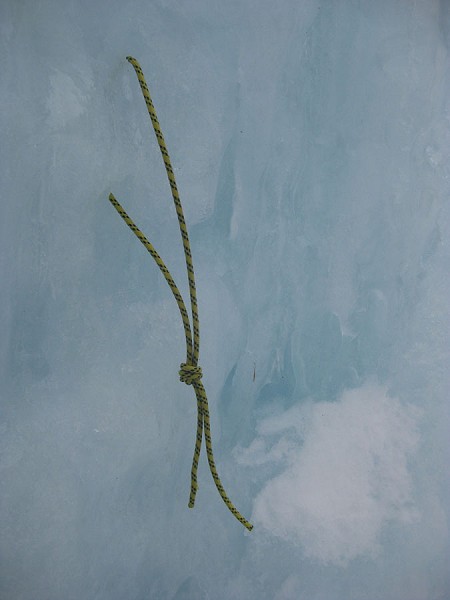

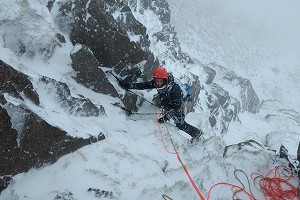











Comments